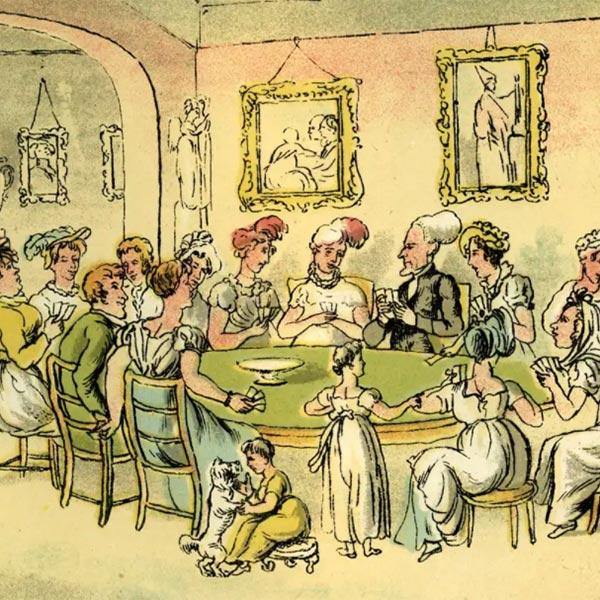A Short History Of Embroidery
Focusing on the history of embroidery as an artistic practice in England, we can say that embroidery was popular in the Middle Ages and saw the emergence of professional embroiderers, both female and male. These professional embroiderers were most often commissioned to adorn items belonging to the church. The term 'opus anglicanum' was coined around the thirteenth century to designate such English embroidery, described by the Victoria and Albert as "highly prized and luxurious".

It has been estimated that the adornment of personal items began in the Tudor period, and involved the beautification of furnishings and garments. It was incredibly expensive to adorn your own belongings with embroidery, so it largely remained something only the very wealthiest could afford. As you would expect, designs became much more secular in style after England broke with the papal authority of Rome in 1533 and instead designs were taken from illustrated books, such as bestiaries and herbals.

Moving on a few hundred years, it is widely reported that Jane Austen was a particularly skilled needlewoman and her nephew James Edward Austen-Leigh wrote of her superior skills in his biography about Jane published in 1869. James wrote:
“Her needlework both plain and ornamental was excellent, and might almost have put a sewing machine to shame. She was considered especially great in satin stitch. She spent much time in these occupations, and some of her merriest talk was over clothes which she and her companions were making, sometimes for themselves, and sometimes for the poor”.
Marianne Knight, Jane's niece, similarly reflected on Jane's interest in needlework and recalled how she "would sit very quietly at work beside the fire...then suddenly burst out laughing, jump up, cross the room to a distant table with papers lying upon it, write something down and then returning presently and sitting down quietly to her work again”.
Not all took to embroidery as Jane did, and it is known her contemporary Mary Wollstonecraft viewed needlework as tedious. She felt embroidery limited the time she had available to busy her mind with worldly concerns, and her seminal piece of work A Vindication Of The Rights Of Women was an important feminist critique of the ways in which women were limited in access to education. Both responses to the art of embroidery cast an illuminating light on how each writer liked to work, and Marianne's recollections suggest Jane enjoyed using needlework as an opportunity to think of and compose ideas.
Embroidery as a practice was revived in the late nineteenth century by the designer William Morris, who began experimenting with embroidery around 1860 and who began to produce innovative new designs. Morris became incredibly popular, and as a result of his growing influence, several art schools were developed with a particular interest in embroidery, such as the Royal School of Art Needlework.

Although in the present day most of our clothes and furnishings are decorated by machine rather than hand, embroidery is still very much practised and became particularly popular during lockdown when people had an increased amount of time to spend at home. We hope this revival of embroidery sticks, and if you happen to have given embroidery a go we would love to see your designs! You can share via our group The Jane Austen Journal, or feel free to get in contact via our Instagram or Twitter.
If you have not yet given embroidery a go and feel inspired by this blog, you can get your artistic flow going with Jennie Batchelor and Alison Larkin's Jane Austen Embroidery Book. Equally, if you are not quite sold on embroidery but fancy trying your hand at something else needlework related, you could try our popular Jane Austen Cross Stitch Kit!
If you don't want to miss a beat when it comes to Jane Austen, make sure you are signed up to the Jane Austen newsletter for exclusive updates and discounts from our Online Gift Shop.




Leave a comment
This site is protected by hCaptcha and the hCaptcha Privacy Policy and Terms of Service apply.